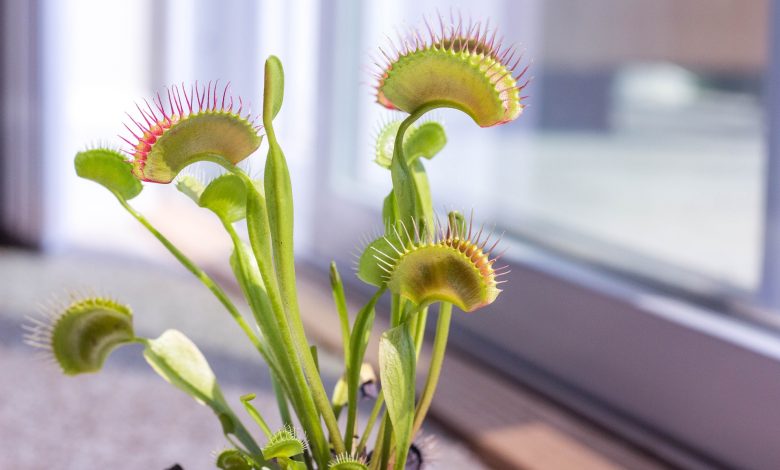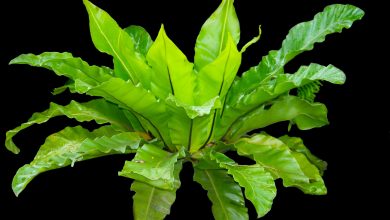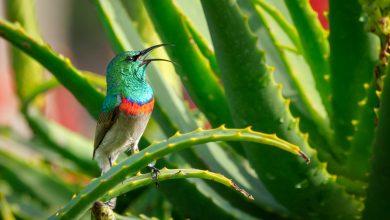Real-Life Versions of Pop-Culture Plants and How to Grow Them

Plants and flowers are absolutely everywhere in our modern-day lives, regardless of whether or not you partake in the hobby of cultivating them.
Perhaps because of this integrated part it plays in our lives, or perhaps because flowers have an innocent, romantic aura about them, creators tend to use them in a lot of their works. From novels to video games, to movies, to tv shows, flowers and plants pop up as key plot points, power-ups, plot devices, and even as antagonistic monsters.
In this article, we’re going to dive in and have a look at those plants and flowers, where each is from, what it does, and how you can grow it yourself at home.

The Enchanted Rose – Beauty and The Beast
Here’s one that you should all know and love. Beauty and The Beast is a classic Disney film. It came out in 1991 and has only continued to grow in popularity since.
It may disappoint you to know that The Enchanted Rose is simply just a red heirloom rose that has been used as the anchor of a curse. So chances are, you already have these growing or know how to. If not, perhaps this fact can serve as the catalyst for you doing so. The red rose is a beautiful flower and iconic when it comes to symbols of romance and love.
You don’t want to be planting heirloom roses yourself, though. It is an old-fashioned flower, and modern hybrid roses have been developed that grow taller, stronger, and are hardier.
Roses need to get a minimum of five to six hours of full sunlight per day, ideally morning sun, as it dries out the leaves, so pick a site that fulfills these conditions. The flower can grow in partial sun, but it doesn’t bloom as well and gradually weakens.
Your ideal soil should have a neutral pH range and be well-draining, while still being able to hold onto moisture long enough for the roses to absorb it.
During the hotter months of the year, you need to be watering the full root area of your roses at least twice per week. When autumn comes around, decrease the amount of watering, but do not let the soil dry out.
Roses work well with mulch, specifically grass or bark-based mulch, so be sure to use it if you want to encourage full, healthy blooms.
When it comes to fertilizers, you want to use natural ones over artificial ones, or just use compost. During summer, you should apply your fertilizer around once per month. During one of these months, you can sprinkle in a bit of Epsom salts with your fertilizer mix to encourage additional plant growth.
Roses need to be carefully pruned, ideally in spring, after the plant has shown its leaf buds. You also should be removing any dead or disease-ridden plant material as you go along. During this process, be sure to wear strong gloves to avoid pricking yourself on a thorn.
The flower makes for both a great garden flower and a great cutting flower, so consider growing a batch both for visual decoration and for you to cut down and give as gifts/use as table décor.

Piranha Plant – Super Mario
Piranha plants are one of Super Mario’s oldest enemies. Being present in the series from the very beginning, it’s unlikely that there is a single person reading this that hasn’t seen these carnivorous foils in some form or another, whether firsthand or otherwise.
Taking a trip back in time to 1985, the piranha plant was introduced in the original Super Mario Bros game and has made an appearance in almost every single title to date, and even some non-Mario ones.
Its iconic dual-leafed green stem, red head with white spots, and spiked teeth are iconic and easily recognizable for people around the world, Mario fans or otherwise. It’s normally found inside green pipes, popping its head up periodically in an attempt to chomp players down, or on occasion, spit fireballs at them. Unfortunately, you can’t grow any of these that can spit fire – sorry to disappoint.
These guys are actually based on venus flytraps. The Mario artists took some creative liberties with the character design, but you can definitely see the resemblance with the teeth and head.
The venus flytrap is fascinating flora, and, like the Mario equivalent, it is a carnivore, gaining its nutrition from mainly insects and arachnids. It waits until something like a fly crawls over its mouth, then snaps shut, and begins digesting.
Dishearteningly, the flower is actually considered a vulnerable species of flora, existing under the threatened species category. It is not so badly threatened, however, that you can’t get your hands on them. You can buy them online, or in plenty of gardening stores.
To grow a venus fly trap, you need to plant them in a plastic pot that has decent drainage. The flower likes its moisture, but if you add too much of it, the roots start to rot.
Gradually repot it as it grows, moving up a size each time. Venus flytraps are accustomed to growing in poor conditions. Badly nourished, sandy, and acidic soil is its forte. So to plant it inside at home, use a one to one ratio mix of sphagnum peat moss to horticultural sand. Don’t be using any sort of compost, fertilizer, or regular potting soils, as you risk damaging the plant with too many nutrients, and it can’t grow well under those conditions.
You also need to make sure that the soil is always damp. This means watering them every few days, or if you’re in a particularly hot climate or have a particularly large flytrap, watering every day. If you can, use distilled rainwater for this. Tap water and bottled water usually have too many alkaline ingredients that can harm the acidic plant. However, it’s not the end of the world if you can’t.
Venus flytraps are hardy old plants. It can thrive in partial shade with only a minimum of four hours of sunlight. However, for maximum effect, give them 12 hours of full sun. If the sun is unusually strong one day, like some days in summer, give them more shade than usual.
Flytraps normally catch its prey, but if you notice it start to look unhealthy, you may want to feed it yourself. As weird as it is to say, you should feed them small live flies, beetles, ants, moths, and so on. Just be sure you don’t overfeed them and keep track of which flytraps you have fed specifically.
The flower/plant actually goes dormant towards the end of the year during winter. It may look like it’s dead, but it isn’t. It’s just conserving energy. During this period, it still needs light and water. You need to make sure that it doesn’t freeze during the cold months, so bring them indoors if you can.

Wolfsbane – The Vampire Diaries
Vampire Diaries wolfsbane is the equivalent to the flower-like herb of the same nickname. In the show, it is exactly what it says on the tin, the bane of wolves. In this case, particularly werewolves. If a werewolf comes into contact with the herb in any shape or form, it weakens and burns them viciously.
The real-life wolfsbane has three names, aconitum napellus, monkshood, or wolfsbane. It is extremely poisonous to humans. However, that hasn’t stopped people from cultivating it in their gardens.
It is a commonly grown oriental flower and, despite its poisonous qualities, has been diluted and used in traditional Chinese medicines for centuries.
The pop-culture adaptation of this herb and its wolfsbane name are actually rooted in reality. During ancient times, hunters would coat their arrows in a poison made from the plant while they were hunting wolves.
It was also widely used as a poison during the time of the ancient Romans; in fact, it got so bad that a law was introduced that sentenced to death anyone found to be growing the herb. Thankfully, you don’t have to worry about that.
Due to the plants toxic nature, be sure to wear gloves while planting them, and avoid doing so all together if you have a pet or kids. You also shouldn’t grow them anywhere near your vegetables. It’s worth noting that, while the flowers are toxic, the roots and seeds are where the bulk of the poison lies.
If you do decide to go ahead and grow it, be sure to plant it in a partially shaded area of your garden. It grows best in well-drained, moist soils, but can grow under less ideal conditions if needs be.
You want to water the plant during dry periods to avoid the soil drying out, but be sure not to overdo it and drown the herb.
Aside from that, there’s not much to growing this plant. It is extremely hardy and can grow under poor conditions, just so long as you water it correctly. Again though, it can be extremely poisonous if it gets into your bloodstream, so don’t work with it if you have open wounds or curious kiddos.



